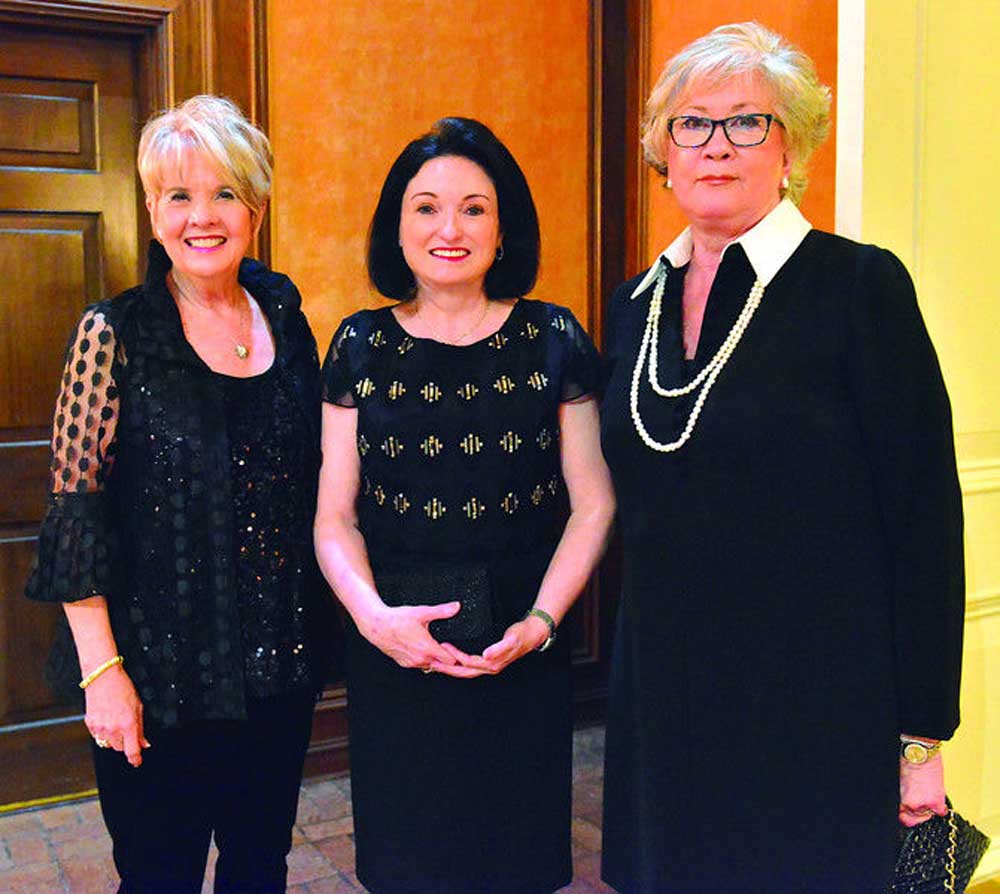Ferns are ideal plants for areas with full or partial shade
Published 7:39 pm Wednesday, May 20, 2015
One of the simple pleasures in life is visiting preserved woodlands and forests where towering trees create quiet, shady, often damp environments. Not many plants can grow in the low light levels cast by groves of large trees. Mosses often cover the ground, and of course, the signature plant of many forests — the fern.
Ferns are survivors, living where few other plants do well. And they have been doing it for a long time, as evidenced by the abundance of fossilized specimens of ferns.
In a landscape setting, ferns make striking accents in the shady garden. While many plants are grown for their flowers, ferns are noted for their finely textured leaves and pleasing green color. Some fern varieties have fronds that are a light green, some dark green and others with surprising colors of gray, silver, red and blue-green.
Ferns serve a great role in the landscape because they grow so well in both partial and fully shaded settings where plant selection is limited. A morning sun exposure would be better than afternoon sun, which can burn the fronds of many types.
Another plus of ferns is that they grow well in damp, even wet soils where few other plants will grow. However, many ferns are sensitive to poor water quality, especially salts.
Most ferns require a rich, well-drained, moist soil with lots of organic matter. Yearly mulching with leaf mold or compost will encourage a thriving colony of ferns.
Ferns do not produce flowers, but reproduce from spores that form on the undersides of their fronds. These spore-bearing structures are often mistaken for scales or some other insects. Some ferns produce two types of fronds. One is a sterile frond with the characteristic fern-shape, and the other often appearing as a stalk with tiny beads packed together bearing the reproductive spores.
Ferns spread by underground rhizomes, some more aggressively than others. These types are easily propagated by division in early spring just as the new growth begins to show. Fall also is a good time to plant ferns so that they can become well established prior to spring growth.
Take care not to plant aggressive spreading types in small beds where their rampant growth would be a problem and take over smaller or less vigorous garden plants. Those types of ferns are better suited for woodland settings, along streams or other areas where their spreading nature is welcome.
Here is a small sampling of ferns for your shaded garden areas. Most are deciduous (die back in the winter), but evergreen types will be noted.
One of my favorites is the Champion’s wood fern(Dryopteris championii). It has dark green, glossy, evergreen, upright fronds, growing 2 to 3 feet tall. It really adds a distinctive look to the shade garden, and grows in clumps rather than spreading.
Tassle fern (Polystichum polyblepharum): A very handsome and attractive evergreen fern with hairy, dark-green fronds. It does not spread, but the fronds grow larger each succeeding year. It tolerates low-light conditions.
Lady fern (Athyrium filix-femina): This native deciduous fern looks delicate but makes a strong presence in the garden. It has finely cut fronds, and the overall form is graceful and vertical, growing about 3 feet tall. It is not an aggressive spreader like some other ferns I’ve grown.
Japanese painted fern (Athyrium nipponicum “Pictum”): This popular plant is readily available, and no wonder. It is hardy and very pretty, sporting multicolored fronds with silvery gray color and hints of purple and red (it’s hard to describe). This deciduous fern spreads very slowly and doesn’t get very tall (to 2 feet at most).
Holly fern (Cyrtomium falcatum): This is another popular fern, with long, large, dark green, glossy, evergreen fronds. It is hardy in our area, though a severe freeze might burn back the fronds, so give it some protection. Remove winter-damaged fronds to keep tidy. It does well in low-light areas. This fern is not a spreader, so plant them about 2 to 3 feet apart.
Wood fern, river fern (Thelypteris kunthii): This is one of the most common landscape ferns of the South, and no doubt you have seen it around. Long, arching, light green fronds light up dark areas with a soft texture. This deciduous fern spreads quickly by rhizomes, rapidly filling in an area. It can take quite a bit of sun if provided consistent moisture.
Autumn fern (Dryopteris erythrosora): This is another very popular evergreen fern, with arching fronds of a fine texture. The fronds in spring take on a coppery-pink hue, turning green in summer and a rusty copper color in fall. It’s an easy-to-grow fern, which is a non-running fern that forms thick clumps. Remove damaged foliage in spring just as new growth emerges. It can take some drought. Grow in partial to full shade.
Sensitive or bead fern (Onoclea sensibilis): This native fern grows along creeks and ditches in East Texas. It gets one of its names because the light green fronds, which turn yellow to russet in the fall, are easily burned by frost. Bead fern refers to the fertile fronds, which, instead bearing leaflets, have compact clusters of beadlike sori, which persist through the winter, providing landscape interest and good material for dried flower arrangements. It grows rapidly and must be controlled in smaller beds, but it is a good choice for the right spot in the landscape with moist soil.
Royal fern (Osmunda regalis): This is a large fern with twice-cut fronds bearing large leaflets. During the growing season, the ends of some of the fronds will have clusters of beadlike sori, giving it a unique appearance. This deciduous, clump-forming fern requires acidic, consistently moist soils.
Christmas fern (Polystichum acrostichoides): This is an attractive, easy-to-grow Southeastern native, evergreen fern. It looks similar to Boston fern with stiff, upright leaves. It grows slowly, preferring shade and a well-drained soil.
Southern Maidenhair fern (Adiantum capillus vereris): Though this deciduous native fern appears delicate and dainty, it is very hardy and adapted to the garden. This bright green fern with black stems spreads slowly by short rhizomes, making thick colonies in the moist shade garden. It is a welcome addition to any landscape.
Keith Hansen is Smith County horticulturist with the Texas A&M AgriLife Extension Service. His web page is http://EastTexasGardening.tamu.edu. His blog is http://agrilife.org/etg. Find him on Facebook at facebook.com/easttexasgardening.







